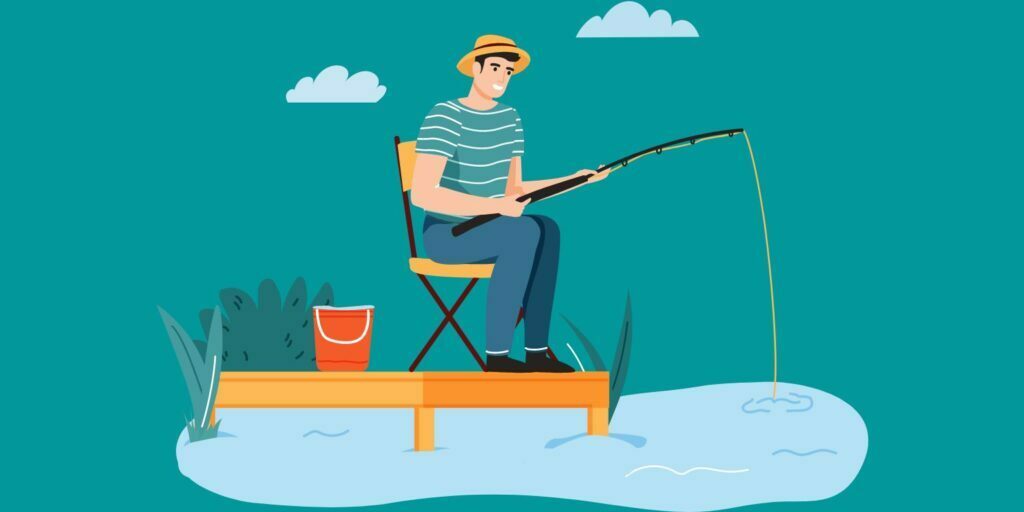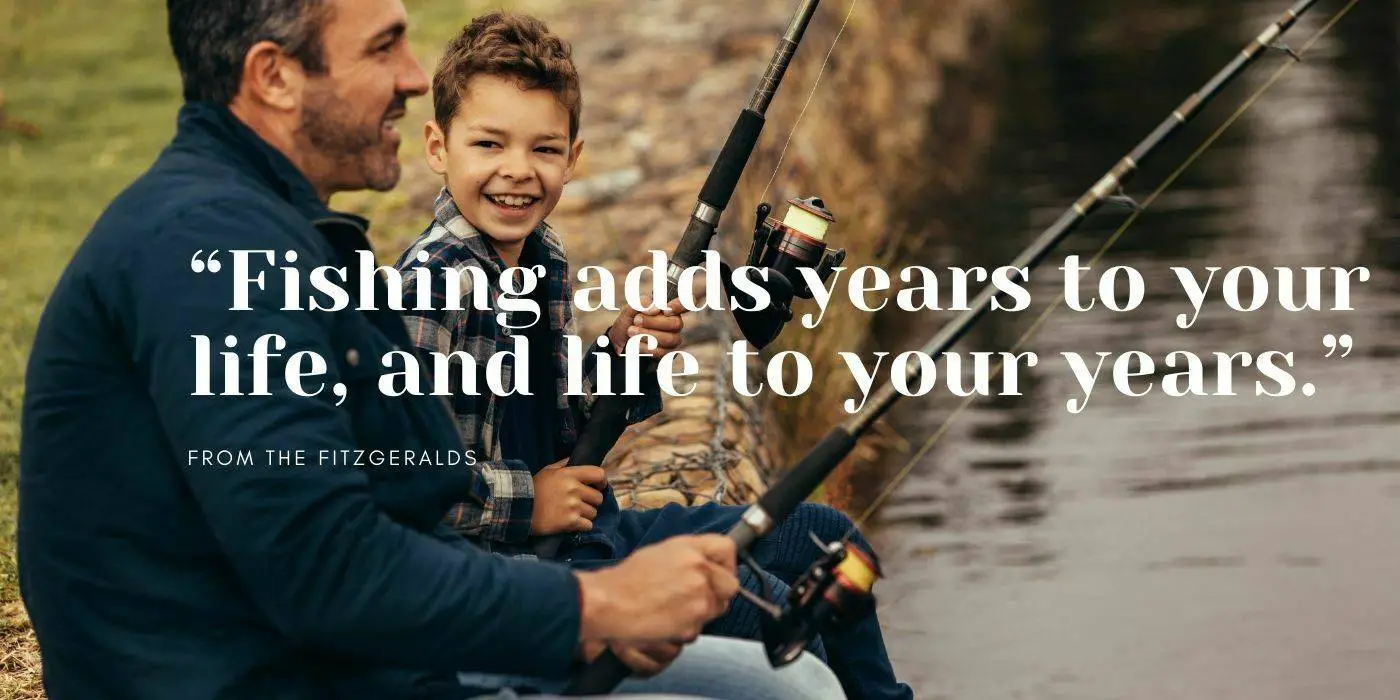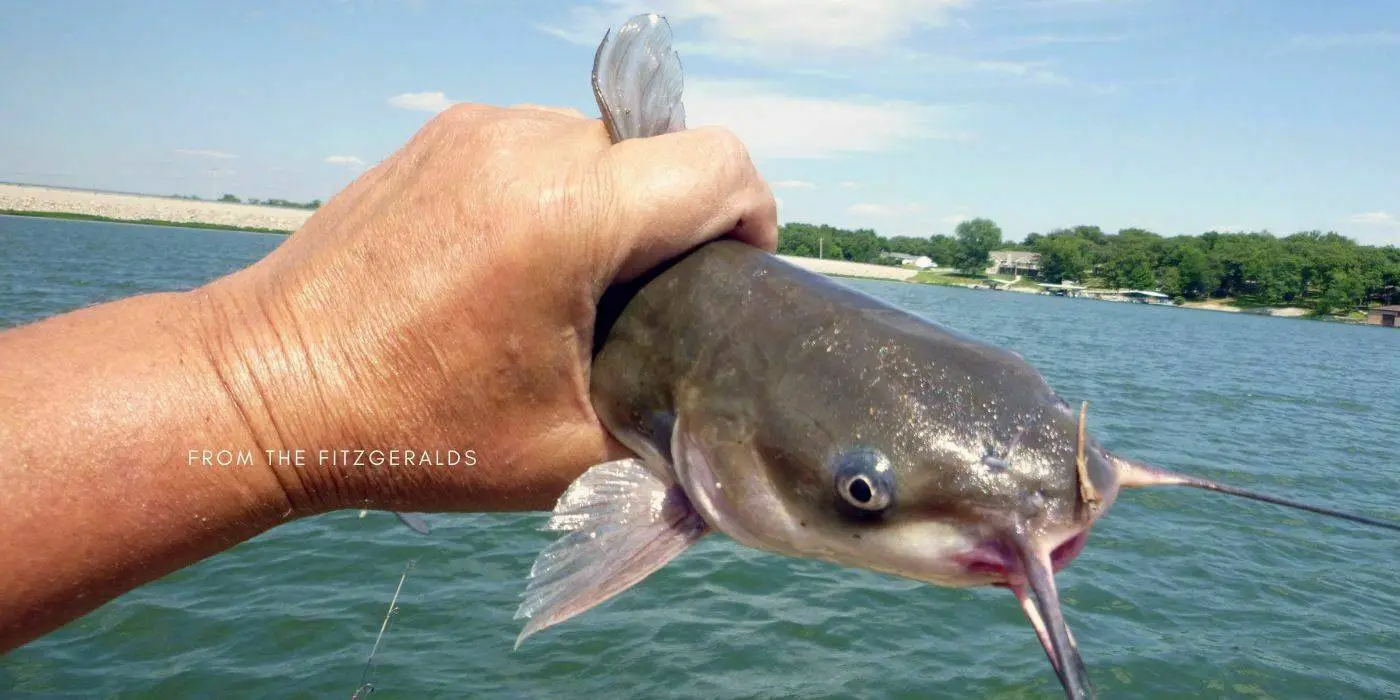Fishing can be a great way to spend a day outdoors, and if you’re new to the sport, fishing for your first time is especially exciting. In this ultimate fishing guide, we’ll teach you everything you need to know about fishing for beginners, from the equipment you need to the techniques you need to use. So don’t wait any longer – get out there and start fishing!
What is Fishing?
Fishing is a sport that involves using a rod, reel, bait, and lures to catch fish. Fish can be caught in fresh or salt water. Anglers typically use a variety of baits to tempt fish into striking the lure. When the fish bites on the lure, the angler can then use their hand to reel it in.
Basic Fishing Requirements
Purchase a License

You need a license to fish in most states. A license is not required in some states such as Montana, Wyoming, and Arizona. Check your state’s regulations before purchasing a fishing license. The most common type of fishing license is the rod and reel license. This allows you to fish with a pole and reel. You will need to purchase a specific type of rod and reel for your state. You can also purchase an all-purpose fishing license that allows you to fish with any type of gear. If you are not sure which type of license to buy, contact your local fisheries department.
Most states offer different types of fishing licenses for different types of fishing. For example, a saltwater fishing license will allow you to fish in salt water lakes and oceans. A freshwater fishing license will allow you to fish in rivers, streams, and reservoirs. Most states also have special privileges that are associated with certain types of licenses. For example, a saltwater bluefish fishing license will allow you to catch bluefish only in salt water environments.
Angler’s Code
The Angler’s Code is a set of guidelines that all recreational fishermen should be aware of. The code was developed by the International Game Fish Association to promote safe and responsible fishing practices.
Important Points to Remember
Here are some of the most important points to keep in mind when fishing:
-Respect wildlife. Do not chase or disturb fish, and never harass or touch aquatic creatures.
-Be aware of your surroundings. Keep an eye out for other boats, people, animals, and debris in the water.
-Follow safety guidelines. Wear a lifejacket, use a rod and reel with appropriate line size, use proper bait, and watch your hands and feet while casting.
-Observe conservation measures. Respect fish populations by limiting your catches and carrying them back to shore whole.
-Enjoy the experience. Have fun, and remember that fishing is a relaxing activity enjoyed by people of all ages.
Choose Your Fishing Spot
If you’re new to fishing, the best place to start is by choosing a fishing spot that’s convenient for you. There are plenty of great spots in your nearby area, so choose one that looks like it would be fun to fish and give it a try! Here are some tips for finding the perfect fishing spot:
-Look for areas with good structure – banks, rivers, streams, ponds, and lakes can all have different types of structure that make them great fishing grounds. Look for areas with deep pools or riffles, or tall banks with overhanging tree branches.
-Consider water temperature – cold water is ideal for trout and other cold-water species, while warmer water is better for catfish and other warm-water species. Check the weather forecast before you head out to see if the water will be hot or cold when you arrive.
-Consider where the fish are feeding – this can help you determine where to put your bait. Fish feed on both sides of the riverbank, so crosshairs your lure so it looks like it’s swimming in both directions. If there’s a lot of movement near your chosen spot, there’s a good chance that fish are present!
-Pay attention to the time of year – during different times of the year, different fish are active in different areas. For example, during the summertime, bass are often found near structure and in deeper water, while in the winter trout feed near the banks.
Necessary Fishing Gears
Now we’ll discuss the different gear you’ll need to get started.
Basic Fishing Gears

Before we get too deep into the specific gear you’ll need for fishing, it’s important to understand a few basics about fishing. First of all, fishing is a sport that can be enjoyed by anyone from beginner to expert. Secondly, most types of fishing can be done with just a few simple pieces of equipment. Finally, there are a variety of different types of fishing available, so whether you’re looking to catch catfish, bass, or trout; there’s sure to be a type of fishing gear suited to your needs.
When choosing the right gear for your fishing expedition, keep in mind the type of fish you’re targeting and your location. For example, if you’re looking to target largemouth bass in warm waters nearshore, you’ll need a rod and reel combo with a good amount of power. If you’re targeting trout in cold mountain streams, though, a much different set of gear will be necessary.
Basic Fishing Gear List:
-Rods and Reels – This is the most basic piece of fishing gear, and simply consists of a rod and reel.
-Bait – This is what you use to catch your prey. Different baits work better for different types of fish, so it’s important to experiment a bit until you find something that works best for you.
-line – Used to hold your bait in place, line can also be used to land your fish.
-Casting Net – A casting net is essential for catching largemouth bass and other bottom-dwelling fish.
-Poles – Used to position your bait and line in the water, poles are also useful for retrieving your catch.
Rod & Reel
The most important thing to consider when selecting a rod is the weight and action you want. Fishing Rods come in a variety of weights and actions, from lightweight fly rods ideal for panfish and small trout, to heavy tackle rods suitable for large trout and salmon. Action refers to the degree of stiffness or softness the rod has. Stiffer rods are better for casting while softer rods are better for handling fish.
Fishing Line
When buying a line, there are three things to keep in mind: weight, size and construction. The heavier the line, the better it will hold its tension and the more likely it is to land your fish. Lines with smaller diameters are better for shallow water because they sink faster; however, they’re less effective when targeting deep-sea fish. Construction refers to how well the line withstands wear and tear; nylon is generally the strongest type of line.
Fishing Lures
In general, there are three types of lures that anglers use: live bait, artificial lures, and fly rods and reels. Artificial lures include worms, jigs, plugs, and spinners. Fly rods and reels can be used with either artificial or live baits.
Live bait can include fish, worms, and frogs. Fish bait can be caught using a variety of gear, including fly rods and reels, hand lines, and spinning or spinning reel setups. Worms can be caught on a variety of gear, including fly rods and reels, spinners, and baitcasting reels. Frogs can be caught on a variety of gear, including fly rods and reels, rod and reel setups with jigs or plugs, or as a part of a live bait set-up.
When selecting a lure, it’s important to consider the type of water you’re fishing in and what type of fish you’re trying to catch. For example, largemouth bass like soft plastics such as crankbaits while salmon prefer flies.
Useful Skills To Learn
One of the most important skills a fisherman can have is patience. Fishing is a slow, tedious process that can be frustrating at times. However, with patience and practice, you can become a successful angler. Here are some essential skills to learn if you want to be a successful fisher:
– Learning how to identify different types of fish
– Knowing where to find the best fishing spots
– Understanding how bait works
– Learning how to cast a fishing net
– Learning how to hold a rod and reel properly
Reading Water
When fishing, always be aware of the surrounding water. Look for clues such as surface waves or ripples, the color of the water and any aquatic life that may be present. If you don’t have time to read the water, use a fishing rod and reel with indicators to find structure in the water. When fishing from a boat, cast your line out as far as possible and then wait for a bite. When angling from a shoreline, use natural baits like worms or bait fish which will attract larger fish.
Knots
You should learn the basic of how to tie a fishing knot first. The first knot you’ll want to learn is the basic bowline. This knot is used to secure a line to a post or another object and is easy to tie. To tie a bowline, take a length of line and put it over the top of the post or anchor you’re tying it to. Make a small loop, being sure that it’s tight enough so that it won’t come undone. Next, take the left hand and make a small loop in the line, taking care not to twist it. Finally, take the right hand and put it over the top of the left loop, making sure that both loops are tight. You’ve now tied a bowline!
If you need to secure something around a boat or weigh down an object, try using a coil. To create a coil, take two lengths of line and tie them together at one end by creating a simple loop. Then, take the other end and make two more loops, this time making them bigger. Finally, tie the loops together in a knot. You can now use the coil to secure something or to weight down an object.
If you’re looking for a knot that’s more complicated, try the half hitch. To tie a half hitch, take a piece of line and tie it around an object, being sure to leave a few inches of line free at both ends. Next, take the free end and make a small loop. Now, put the loop over the top of the first one and pull tight. You’ve now created a half hitch!
Let’s Catch Your First Fish
Congratulations! You’ve made it this far, and you’re now ready to start fishing. Before you do anything else, though, there are a few things you need to know about catching your first fish.
Casting
When fishing from a stationary or slow-moving object like a bank or pier, casting is the best way to get your line in the water. To cast, simply extend your arm and hand forward, with your fingers pointed downwards. Then, snap your wrists backwards so that your fingers pull the line tight. Finally, relaxed hands should hang down. You can also use a spinning reel to catch more fish by using bait and lure techniques.
How To Tell If You Have A Bite
-When you’re fishing for trout, one of the most important things to know is how to tell if you have a bite. Here are a few tips to help you determine if your line is taut and the fish are biting:
-If your line is tight and the bobber is moving, there’s probably a fish on the other end! You may need to adjust your reel speed or use a different type of bait.
-The time when bobber isn’t moving and the line feels slack, it’s likely that there isn’t much action going on in that section of water. Check around for any possible obstructions (logs, rocks, etc.), and try switching to a different bait or using a different method (e.g., casting into deeper water).
-If you’re still having trouble catching any fish, it might be time to move on to another spot. Good luck out there!
What If I Got Stuck?
If you get stuck while fishing, there are a few things you can do to get yourself out of trouble. If you’re in a river, try wading upstream and looking for an opening; if you’re in a lake or ocean, try swimming to shore. If all else fails, try calling for help (using a whistle or a handheld radio) or breaking off your line and heading back home.
If Cast Stuck Over A Tree Branch
If your cast is stuck over a tree branch, the best way to remove it without causing further damage is to use a pair of pliers. First, grasp the cast around one end and pull up on it while holding on to the other end of the cast with the pliers. Continue pulling until the cast is free from the branch.
If Cast Stuck On Something In The Water
Cast can become stuck in the water on a fishing trip, kayaking trip, or rafting trip. If this happens, it is important to stay calm and assess the situation. If possible, remove yourself from the water and use your hands and feet to move objects around until you can free yourself. If you are unable to free yourself, don’t attempt to save yourself- instead call for help.
Keeping Or Releasing A Fish
One of the most important decisions you will make when fishing is whether or not to keep or release your catch. The reasons for keeping or releasing a fish can vary; sometimes it’s because you want to cook it, other times you want to release it back into the wild. Keep in mind that each state has different regulations, so be sure to check with your local authorities before making any decisions. Here are some tips on how to decide if you should keep or release a fish:
If you have caught a fish that is over three inches long, you should definitely release it back into the lake or river.
If the fish is smaller than three inches, consider cooking it before releasing it back into the water.
If you don’t plan on cooking the fish, try to determine where it came from and release it back there. If the fish was caught in open water, release it back into the water; if it was caught in a body of water such as a river or lake, you should release it back where you caught it.
How To Hold A Fish?
If you’re new to fishing, one of the most important things to learn is how to hold a fish. When fishing from a stationary position, your hands and arms should be positioned so that they are perpendicular to the water’s surface. This will help you keep your balance and reduce the chances of losing your fish.
To hold a fish, place your hands either on its sides or head. Be sure to keep your fingers pointed in the same direction as the fish’s spine. Then, use your thumbs to gently pinch the fish’s cheeks and hold it steady.
How To Pull The Hook Out Of The Fish?
So what do you do when the fish pulls the hook out of your line?
There are a few things to keep in mind if the fish manages to get your line off of the reel.
The first thing to remember is that the fish is trying to free itself from the hook. This means it is fighting for its life and will be doing everything it can to get loose.
Don’t try to hold onto the fish or re-hook it until it has stopped fighting. Instead, release it back into the water as soon as you can and start again with a new rod and reel.
If you can’t get the fish loose, there is another option: cut the line close to the reel with a knife or some other sharp object. This will sever the power of the fish’s pull and make it easier to dislodge the hook.
Releasing A Fish
Here are some tips for releasing a fish:
-Aim for the head and spine. This will ensure your fish survives longest.
-When reeling in the fish, don’t use too much force. You want to pull it in slowly so it doesn’t get scared and swim away.
-If you can, try to land the fish near a bigger body of water so it can swim away unharmed.
Filleting Fish
The best way to filleting fish is to use the method of on-the-spot filleting. You can also do this by using bone-handled knife, with a finger guard.Here are few tips on filleting fish:
Fillet the fish into sections with a clean, sharp knife. If you have a CO2 laser, use it to quickly and efficiently cut through tough muscle tissue and tendons while leaving the skin intact.
Gently lift the skin off in one piece from below the top of the fillet down to the tail section. Cut along each side of the belly (towards your fingers) and remove it. Use your index fingers to pry out any remaining bones from inside your fish by gently pressing them out from under their shell with your thumb.
Push back any remaining pieces of cartilage or bone that may be sticking out of each section as far as they will go within its shell. Take care not to rip or tear any perforations in your fish’s skin while doing so; pull back slowly while trying not to squeeze too hard because you don’t want excess water coming in through these perforations during cooking or freezing. Pull back gently but firmly while you move your hands towards the tail end of the fish.
Using a sharp boning knife, slice down the spine of the fish, just behind the head. Work your way forward, making sure to keep the backbone intact as you go.
Finally, cut off any remaining filet at the tail end with a sharp knife.
Beginner Fishing Tips
If you’re a beginner fisherman, there are a few things you need to know before heading out on your first fishing trip.
Here are some tips to get started:
– Start by finding an area that is popular with fishermen. This will help you learn about different types of bait and how to use it.
– Choose the right fishing gear for the conditions. A good rule of thumb is to use the same equipment if you’re fishing in open water or shallow water.
– Learn how to bait your hook andbaited hook techniques. You can use anything from worms to shrimp.
– When you catch a fish, be prepared to reel it in quickly. Most fish can be caught using basic techniques, but some require a bit more finesse.
By following these tips, you’ll be able to start fishing successfully.
Fishing FAQs
Fishing is a great pastime for people of all ages and abilities. Whether you’re a beginner just learning how to fish or an experienced angler looking for new strategies, this guide will help you get the most out of your fishing experience. Here are some of the most common fishing questions and answers:
Is Fishing Easy To Learn?
Fishing can be an easy sport to learn for beginners. There are a few basic steps you need to follow in order to get started, and after that, everything is pretty easy. Here are the basics:
1. Choose your spot. First, find a spot where you will be fishing from. This could be on the bank of a river or lake, in a boat or on the ground. You don’t need to worry about getting too close to the fish – just find an area near enough to where they are hiding but far enough away so you won’t get tangled up in their lines.
2. Prepare your gear. Once you have chosen your spot, it’s time to start preparing your gear. You’ll need some sort of rod and reel (or rod and line), bait (if you’re using bait), and a fishing net or basket if you plan on catching any fish. Most people also bring along a bucket or other container to catch the fish when they’re caught.
3. Cast your line. After you’ve prepared your gear, it’s time to cast your line into the water. Cast your line out as far as it will go, then pull it back in so that the end is close to the rod. Now, wait for a fish to swim by – if you’re using bait, make sure to offer it to the fish before it gets too far away. Once you’ve caught a fish, reel it in slowly and carefully.
What Is The Best Way To Catch A Fish?
Some of the most common methods for catching a fish include using a rod and reel, casting a line into the water and waiting for a catch, and using a bait like worms or chicken livers.
Whatever your method, make sure you are following the basic guidelines for fishing, including choosing the right location and properly preparing your bait. If you’re new to fishing, be sure to consult an experienced angler for help getting started.
Can I Teach Myself To Fish?
YES, I DO IT ALL THE TIME!!! I have fished in salt water and fresh water across 4 continents for the last 15 years, specializing in the U.S Geographical Area Most of you haven’t fished in American lakes or creeks but we seem to do pretty well when the larger fish are caught with strips of worm. The growing populations of pike in many our trout streams has a lot to do with this success as they are quite willing to bite frozen stripers and sculpins!
Why Can’t I Catch Fish?
If you’ve ever wondered why you can’t seem to catch any fish, odds are you’re not using the right techniques. Fishing can be a really rewarding sport, but if you don’t know what you’re doing it can be a frustrating experience. This guide will teach you how to fish like a pro and start catching those big fish in no time.
The first step is to find the right spot to fish. Some people think that fishing in open water is the best way to go, but that’s not always the case. If there are big schools of fish near the surface, then that’s where you’ll find them. However, if you want to find smaller fish, then fishing in deeper water is your best bet. Trying to target big fish in shallow water can be futile because they’ll just swim away.
Once you’ve chosen a spot, it’s time to get ready for your hunt. You need to have the right equipment if you want to catch any fish: a good fishing rod, reel, line and bait. Make sure your bait is fresh and tasty – something that will appeal to the fish. Try different baits until you find one that works best for you.
Final Thought
If you’re new to fishing, or simply want some tips on how to catch more fish, this guide is for you. Whether you’re looking to fish in a natural environment or in a man-made reservoir, we’ll teach you everything you need to know. From selecting the right gear to effective baiting techniques, we have everything you need to get started. So don’t wait any longer – start your fishing journey today! Wish you experienced fishing journey with lot of fun.




